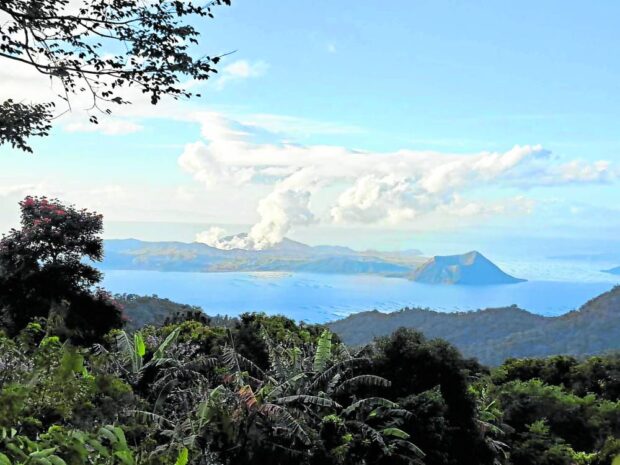
Taal Volcano remains the biggest tourist draw of towns around it due to its serene and picture-perfect beauty, as shown in this photo taken Feb. 4, 2024 from Tagaytay City, Cavite, even as it continues to belch toxic fumes and remains under alert level 1, or showing low level of unrest. — File photo from MARLON MALLARI / CONTRIBUTOR
MANILA, Philippines — State seismologists confirmed that a weak phreatic or steam-driven eruption occurred at Taal Volcano’s main crater on Wednesday.
In an advisory, the Philippine Institute of Volcanology and Seismology (Phivolcs) said the “weak phreatic eruption” was observed between 8:27 a.m. to 8:31 a.m.
“The event produced white steam-laden plumes that rose 2,000 meters above the main crater before drifting southwest based on camera monitors,” said Phivolcs.
“Sulfur dioxide (SO2) emissions decreased last week and averaged 2,191 tons per day on May 6, 2024,” it also noted.
“Nonetheless, average SO2 emissions since January this year remain high at 8,913 tons per day,” it added.
READ: Taal Volcano blows off steam, but no lava—Phivolcs
According to Phivolcs, the phreatic activity is “likely driven” by the continued emission of hot volcanic gasses at the Taal main crater and could be succeeded by similar events.
The agency, however, underscored that the unrest is “unlikely to progress into a magmatic eruption.”
“Phivolcs reminds the public that Alert Level 1 prevails over Taal Volcano, which means that it is still in abnormal condition and should not be interpreted to have ceased unrest nor ceased the threat of eruptive activity,” it said.
Under Alert Level 1, sudden steam-driven or phreatic explosions, volcanic earthquakes, minor ashfall and lethal accumulations or expulsions of volcanic gas can occur and threaten areas within the Taal Volcano Island.
Entry into the Taal Volcano Island, Taal’s Permanent Danger Zone — especially the vicinities of the Main Crater and the Daang Kastila fissure — remains “strictly prohibited,” said Phivolcs.